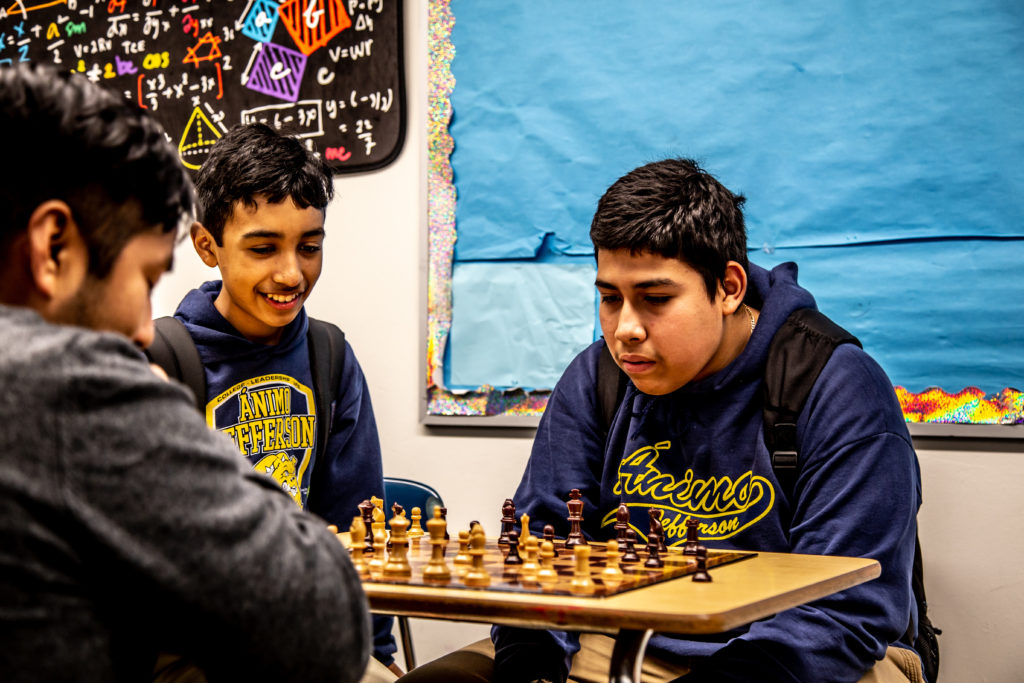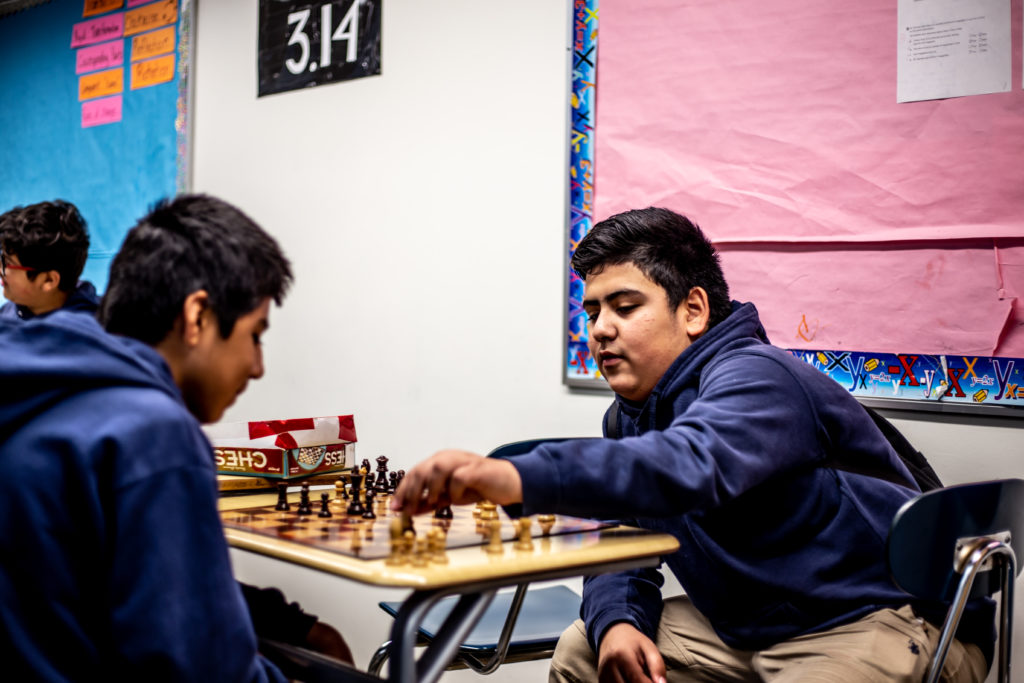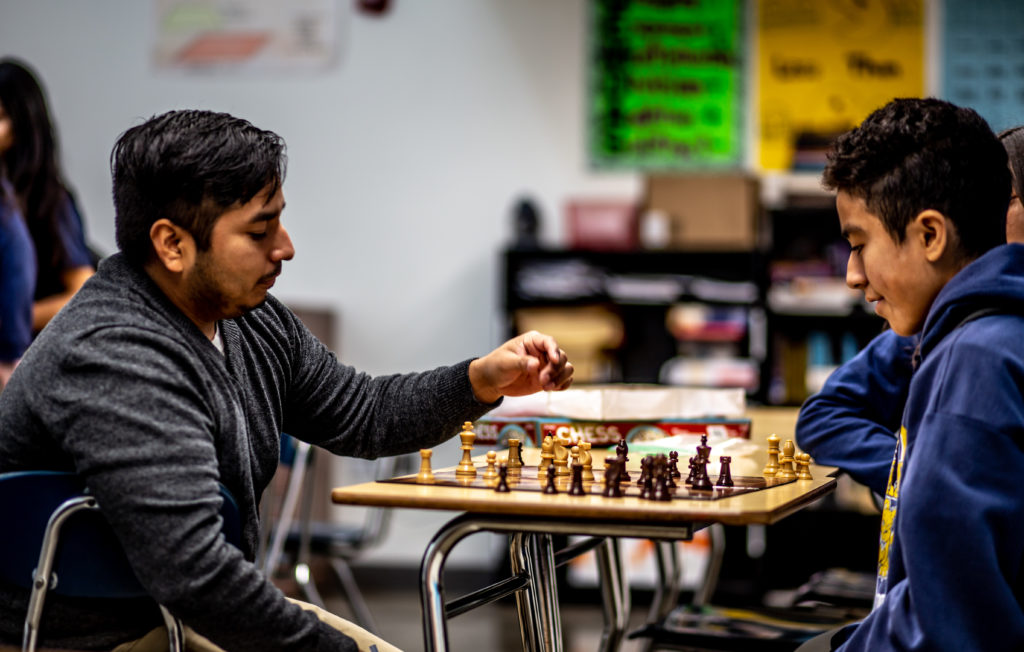How One Math Lesson Turned Into a Chess Club

The courtyard at Ánimo Jefferson Charter Middle School bustles with laughter and the sounds of children as they crowd around each other at the lunch tables. Down the hall, the hollow thud of wooden chess pieces echoes in Luis Garcia’s math classroom as 20 students eagerly set up chess boards. Teachers never imagined that what started as an enrichment lesson would create such a strong commitment to chess at their school.
Three years ago, Garcia collaborated with a colleague to put together enrichment lessons to teach students the basics of chess. To their pleasant surprise, when the lesson ended many students continued practicing and began to teach their friends. Soon students in all grade levels developed an interest in chess and came to Garcia eager for a place to learn and develop their skills. Wanting to encourage their enthusiasm, Garcia began to open up his classroom during lunch periods as a space to play. “I thought it would be beneficial to give students an additional space to learn,” said Garcia. Now, each day, students crowd into Garcia’s classroom eager to challenge themselves and others. “[In chess club] you encounter students who are just learning how to play, those who are improving their skills, and others who are more advanced and interested in participating in tournaments.”
Self-Directed Learning

Seventh graders Kevin Cruz and Jorge Abarca stare each other down across a chess board before bursting into laughter. The two have a friendly rivalry, and every lunch they eagerly rush to chess club to test their skills. On this particular day, Cruz won. Loss doesn't bother Abarca as he sees each game as a learning experience.
Garcia’s chess club provides students with an exciting and challenging self-directed learning experience outside of formal class time. For Heather Corral, a seventh grader, chess has become a big part of her life. “One weekend my mom and I were at home and I told her about chess club, so I taught her how to play,” beamed Corral. The two now play every weekend and Corral relishes in the fact that she was able to teach her mom something new.
Connecting Math and Chess
As a math teacher, Garcia enjoys seeing students develop their logic and mathematical reasoning. Chess and math incorporate many of the same skills. Both require students to problem solve, think strategically, recognize patterns and practice abstract reasoning. “While playing chess, students analyze [the board] and situations as they would a math problem. Chess forces them to think ahead, make predictions, learn previous mistakes, and strategize,” explained Garcia.

Garcia attributes his love for teaching to his seventh grade math teacher. “He’s the reason I became a teacher. His experience was similar to ours--he was from the same neighborhood of South Central Los Angeles,” reflected Garcia. This teacher helped Garcia to begin looking at math as less a series of equations and problems, and more as a way to access new opportunities.
His college experience further solidified a desire to teach. Working in the tutoring center at Cal State Los Angeles, Garcia encountered college students who had difficulty grasping basic math concepts. “This motivated me to teach in Los Angeles, because here were students from communities like my own who made it to college, yet were still having bad experiences with math,” said Garcia. It was Green Dot’s mission to provide all students with a high quality education that led Garcia to Ánimo Jefferson. There, Garcia helps his students see math as more than coursework they must do, but rather as a path to academic and career opportunities.
Brandon Reyes, a seventh grader at Ánimo Jefferson loves chess and is always seeking out opportunities to improve. “Instead of playing sometimes I just watch a match to figure out their strategy and the next time I play I try to use those things,” said Reyes.
Garcia never imagined that chess would garner such an enthusiastic commitment from students at Ánimo Jefferson, and is glad that it has become such a special activity at the school. He hopes to expand the club and start a series of local tournaments to provide students with opportunities to further develop their skills.
